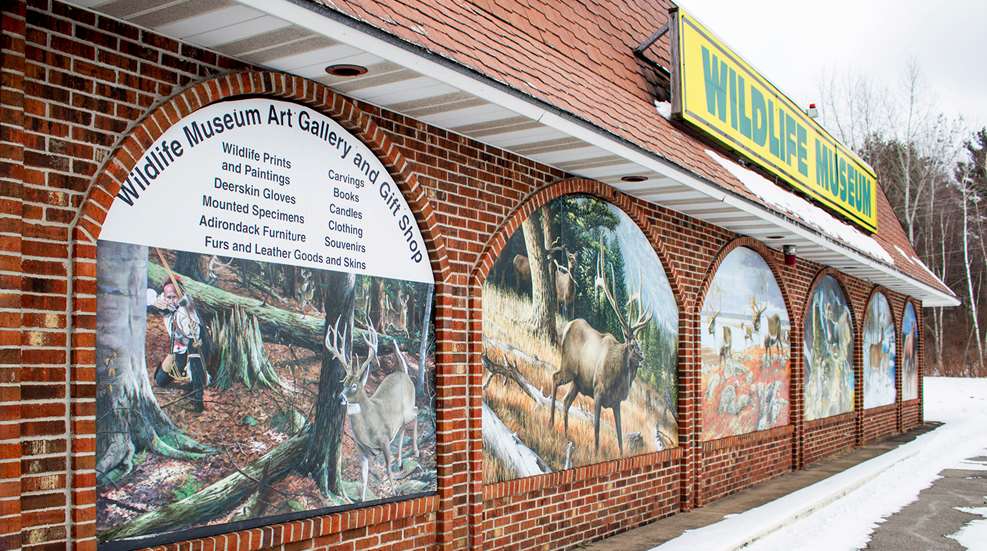
“Never judge a book by its cover.” I can still hear my mother’s voice carrying those words of wisdom, yet I have failed to heed her words. You see, in Upstate New York, just south of the border of the Adirondack Park, there is a plain brick building that I’ve driven past the better part of a hundred times, and never stopped in. There is a modest sign atop the façade, saying “WILDLIFE MUSEUM” in capital letters, and the parking lot is usually empty, or nearly so. In my defense, the times at which I would pass the place were, more often than not, either very early or very late, as it is on the route to my favorite Adirondack hunting ground. But still, I should have stopped.
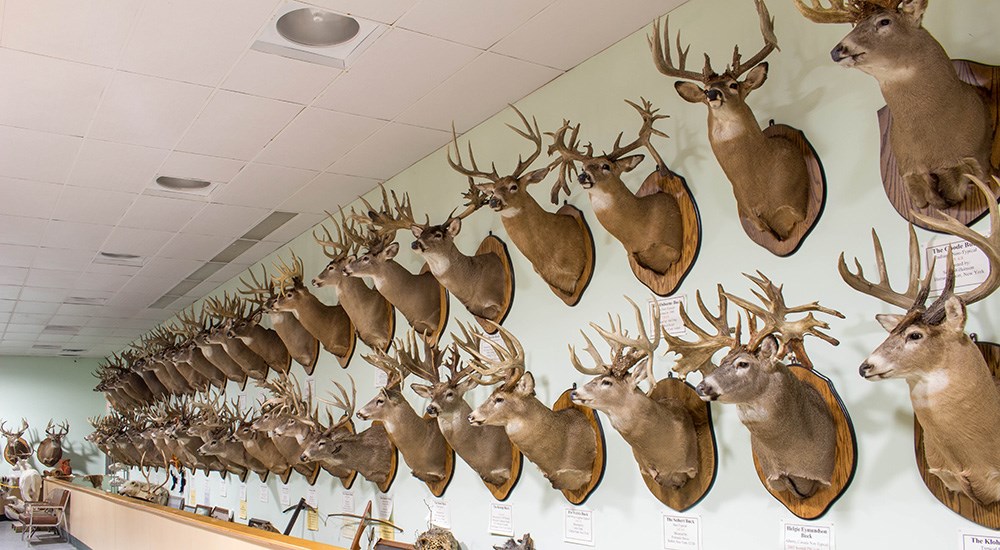 Over 160 deer heads—many replicas of record-book bucks—grace the walls of The Wildlife Sports and Education Museum.
Over 160 deer heads—many replicas of record-book bucks—grace the walls of The Wildlife Sports and Education Museum.
It was my taxidermist who finally convinced me. Matt Pigliavento runs Lasting Memories Taxidermy, and as I was in his shop to pick up another of his masterpieces, he was telling me of the work he was doing with a museum, and the grandiosity and diversity of the collection of heads, skulls, full body mounts and memorabilia. I demanded to know where this was located, and when he told me it was on N.Y.S. Route #30, just north of Amsterdam, my eyebrow cocked. “You mean the place that looks like an old supermarket?” Matt nodded in affirmation, and we made arrangements to visit it together. Either he was pulling my leg, or I’d overlooked a diamond in the rough. It was the latter.
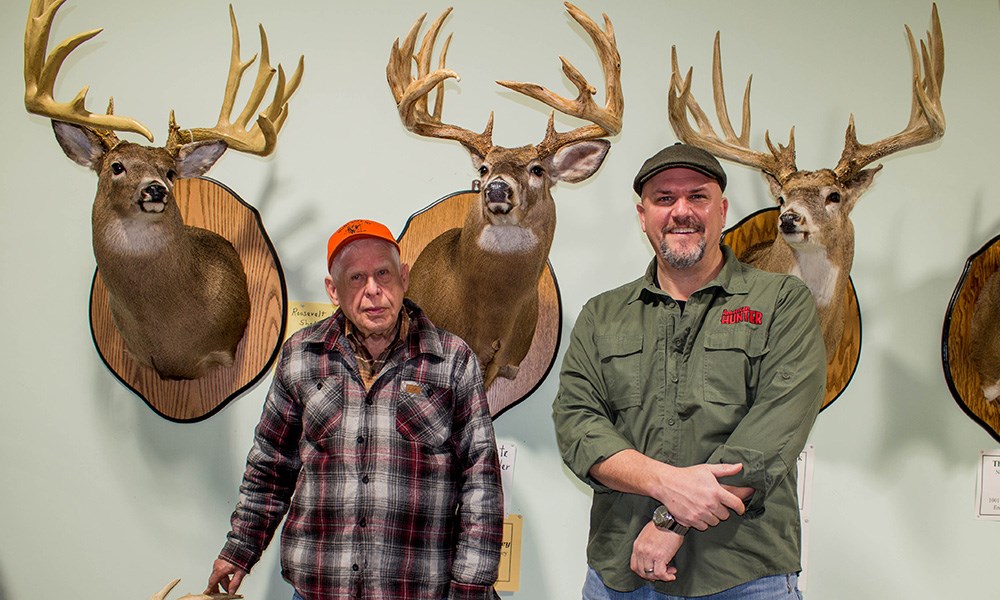 Bob Kazmierski (left) and the author, flanking the New York State record buck; the mount on the left are a cast of the shed antlers found when this buck was younger.
Bob Kazmierski (left) and the author, flanking the New York State record buck; the mount on the left are a cast of the shed antlers found when this buck was younger.
The Wildlife Sports and Educational Museum building was, in fact, a Grand Union supermarket, in the Town of Vail Mills in Fulton County, years ago abandoned and sold as commercial property. Enter Mr. Robert Kazmierski, a life-long taxidermist from Gloversville, New York, who in 2001 negotiated to purchase the building, despite some structural issues. “The roof had been leaking for a while, so I had to figure a new roof into the cost, but we came to an agreement. I wanted the building to become a taxidermy museum, to share with and help educate future generations,” Kazmierski related. Bob was born in 1937, having spent the vast majority of his life as a taxidermist.
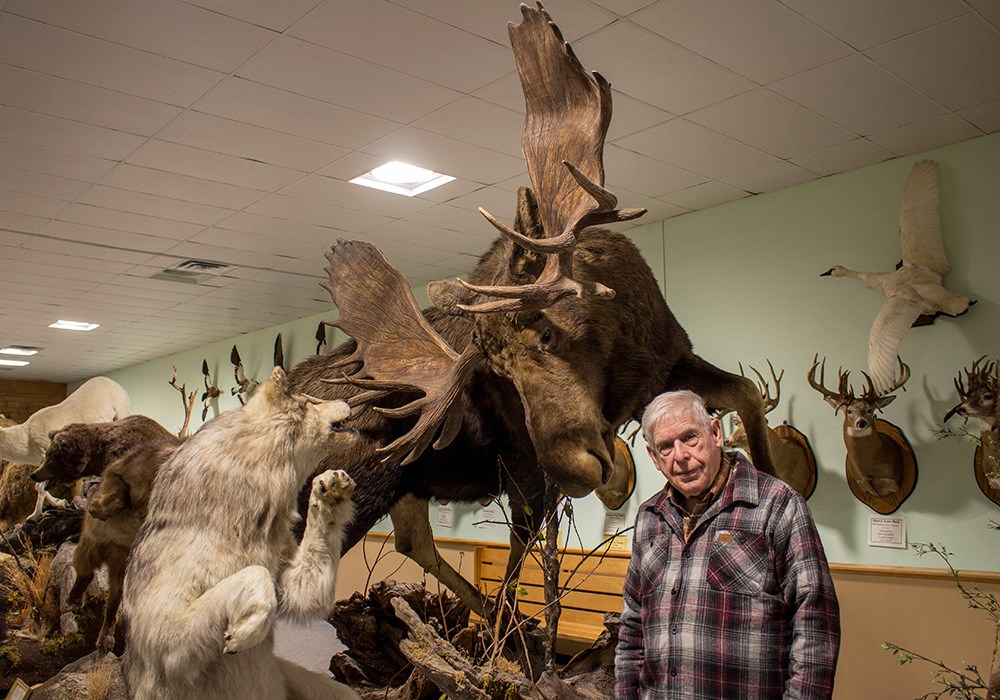 The Wildlife Museum has many wildlife dioramas, including this wolf versus moose piece.
The Wildlife Museum has many wildlife dioramas, including this wolf versus moose piece.
“I love taxidermy, especially birds, but I also sold taxidermy supplies and made deerskin gloves, so I made a bunch of friends in the field. As a youth, I spent a summer working for the New York State Museum, and thought I could out-do their display one day,” said Kazmierski. (Note: the N.Y.S. Museum has a few interesting full body mounts, including deer, bear, moose, cougar and more). So with the new building sorted, Bob began to assemble the museum he’d always wanted to see.
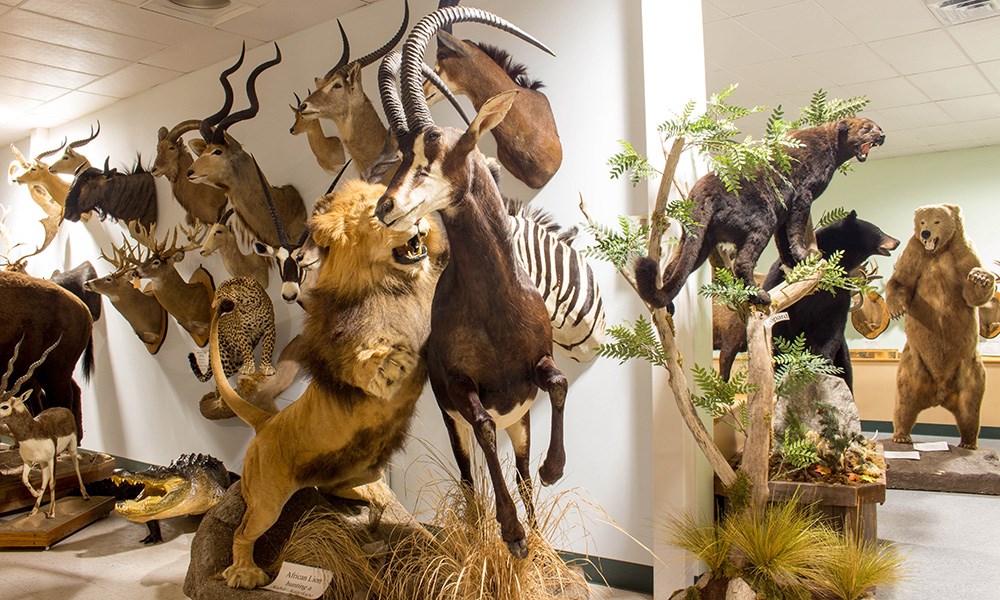 Lion hunting sable, a melanistic leopard and various bears all grace the halls of the Wildlife Sports and Education Museum.
Lion hunting sable, a melanistic leopard and various bears all grace the halls of the Wildlife Sports and Education Museum.
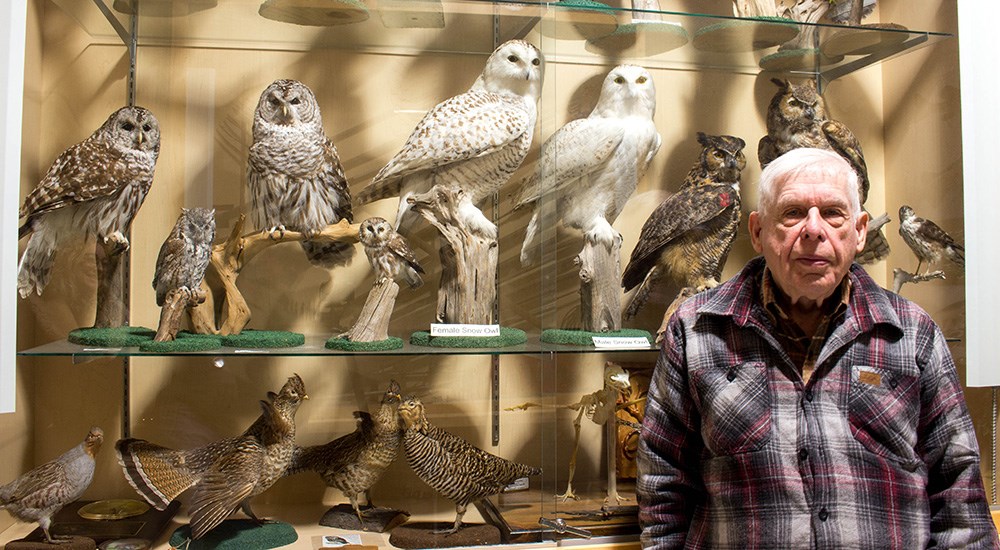 Director Bob Kazimierski and his collection of mounted birds, some were mounted in the 1960s.
Director Bob Kazimierski and his collection of mounted birds, some were mounted in the 1960s.
Collaborating with over 60 other taxidermists, Bob would begin to assemble one of the largest whitetail deer displays anywhere. The majority of these deer are casts of the antlers from the most famous whitetails ever taken, meticulously mounted on forms donated by McKenzie Taxidermy Supplies, using real capes. Included in the mix is a replica of the New York State record buck—taken by Roosevelt Luckey in 1939 in Allegany County, a 14-point behemoth measuring 198⅜ inches—as well as a casting of the incredible shed antlers from that same buck, which outscore the headgear he was wearing when taken. Over 160 deer heads grace with walls of the Museum, offering one of the widest assortment of antlers I’ve ever seen; from giant typical specimens, to those massive palmated antlers that almost defy scoring, they are represented here.
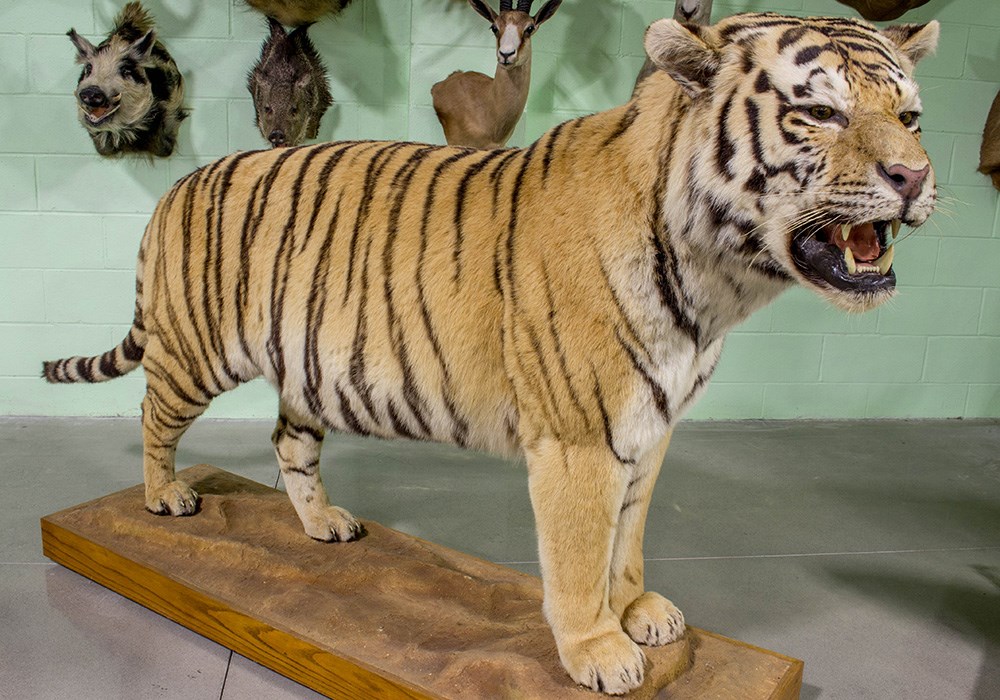 A full-body Siberian tiger mount in the addition of the Wildlife Museum.
A full-body Siberian tiger mount in the addition of the Wildlife Museum.
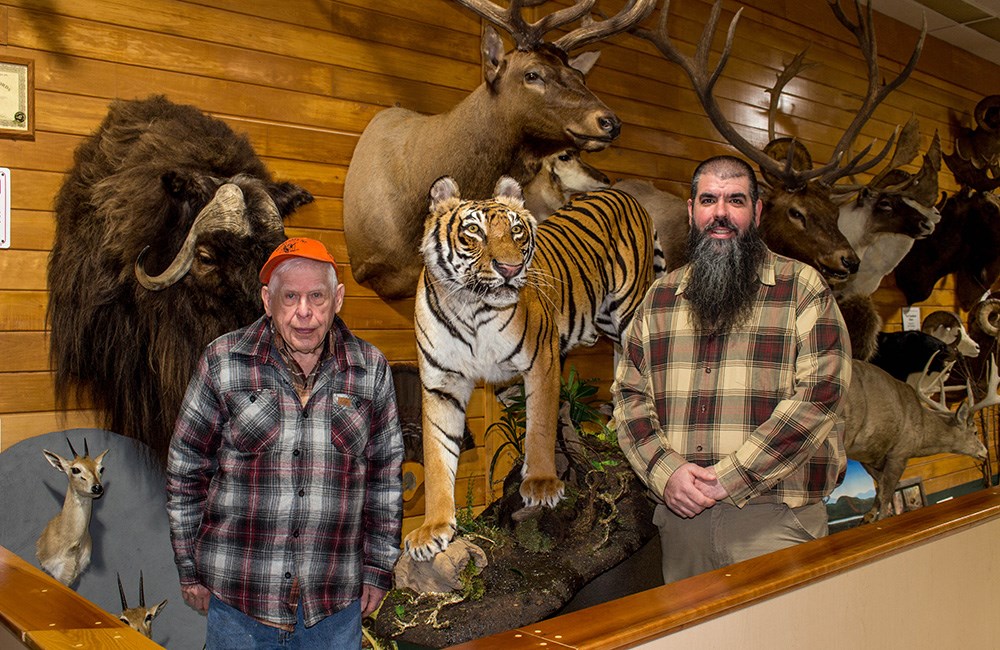
Bob Kazimierski and taxidermist Matt Pigliavento with a full body tiger mount. The animal was reared and died in captivity.
There are many more species than deer represented at Bob’s place; in fact there are some jaw-dropping full body mounts of moose, wolves, musk ox, bears of all sorts, and birds as well. In fact, mounting birds is what Bob Kazmierski is passionate about, and in the museum he has assembled quite an impressive collection. There are many birds of prey, including hawks, owls, kestrels and the like, as well as many of the popular game species like pheasants and grouse. There are also some oddities in the bird department, including a full-body penguin, and the only passenger pigeon mount I’ve ever seen.
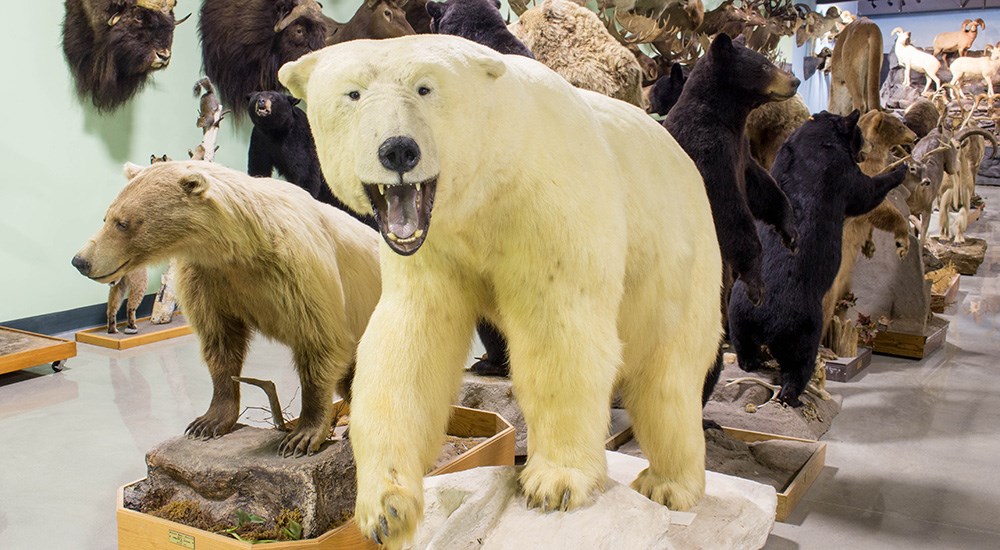 All the North American bear species—polar, brown and black—are represented, as are many other predators.
All the North American bear species—polar, brown and black—are represented, as are many other predators.
While North American animals are well-represented throughout the Wildlife Museum, there are no shortage of African and Asian animals as well. There are two full-body mounted tigers (both bred in captivity, and died of natural causes), including one mounted by Matt Pigliavento, at least eight full body lion mounts, numerous leopards—one is black, or melanistic—and three full-body giraffe mounts. There are rhinoceros, elephant, buffalo from all continents, and too many antelope species to list; I feel comfortable saying that there are well over 100 different species on display. You’d be hard pressed to find a place to spend the day with your children and see so diverse a collection of animals from around the globe.
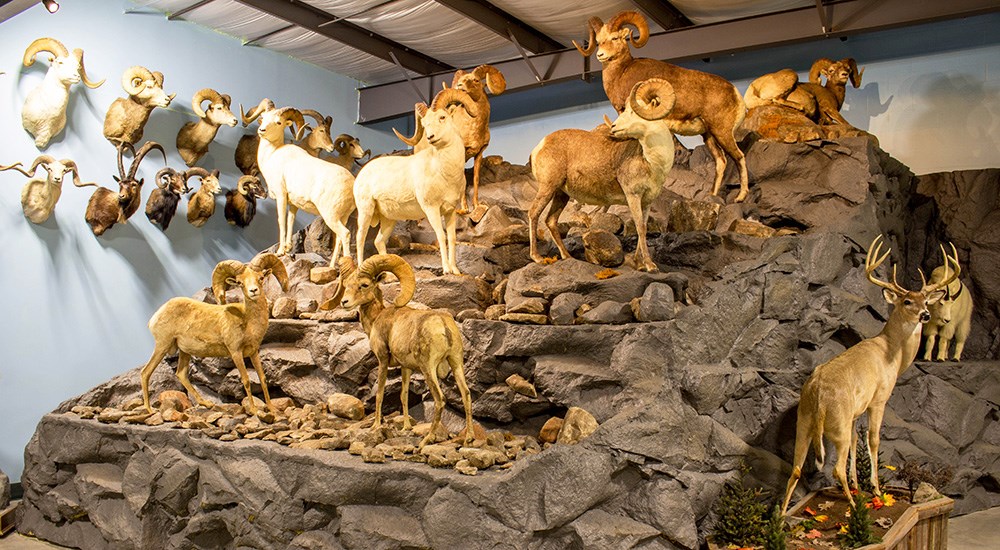 The Wildlife Museum’s wild sheep mountain is an impressive sight, especially for those who yearn for the mountains.
The Wildlife Museum’s wild sheep mountain is an impressive sight, especially for those who yearn for the mountains.
Bob quickly filled the original 13,000 square foot building, and decided an expansion was inevitable. In short, he doubled the size of the museum, adding another 13,000 square feet, giving him room to properly house many of the African mounts—including a diorama of two lions eating a Cape buffalo, and a sheep mountain hosting eight full-body North American wild sheep. There is an amazing whitetail diorama, with seven bucks and does in a running scene, as well as several leopards in various stages of activity. All in all, the addition is every bit as exciting and awe-inspiring as the original side of things, if a bit less diverse.
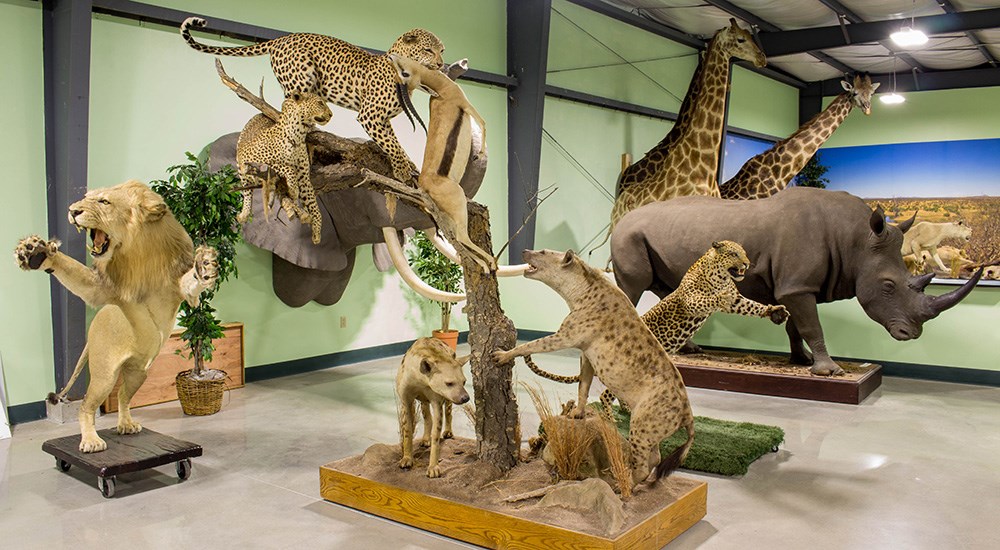 Lions, leopards, hyena, rhinos and giraffes; all are well represented at the Wildlife Museum.
Lions, leopards, hyena, rhinos and giraffes; all are well represented at the Wildlife Museum.
In addition to the amazing animal mounts in Bob’s original museum, there are numerous trophy fish—including a replica of the New York State record pike—as well as wonderful collections of vintage fishing reels, Native American stone arrowheads and spearheads, a very impressive collection of trapping gear, with a number of vintage bear traps. There are displays of various firearms, from the flintlock era up through the modern designs, intended to educate those who tour the facility in the evolution of firearms.
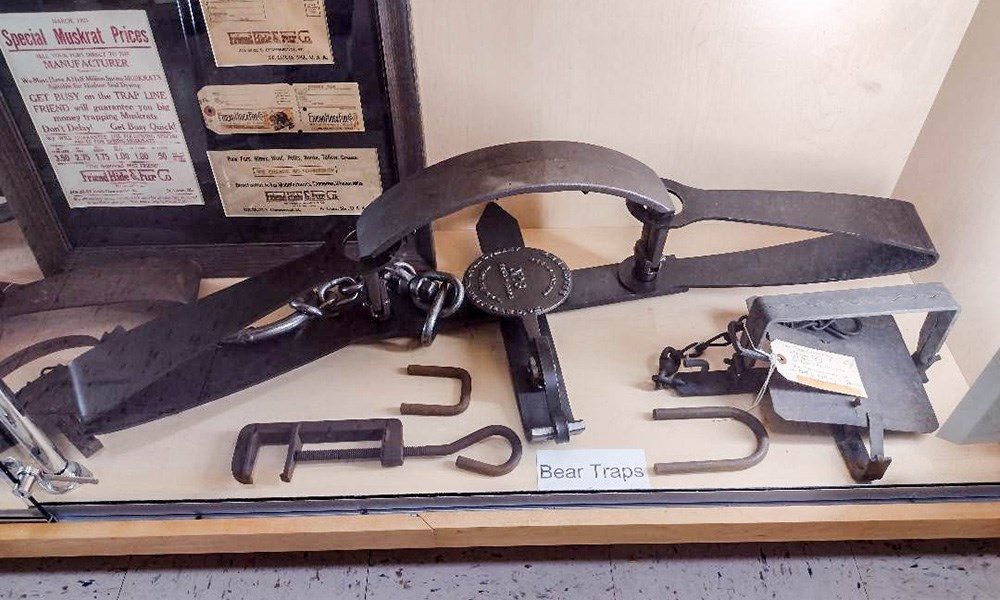 The museum contains an impressive collection of traps and trapping gear, including some huge bear traps.
The museum contains an impressive collection of traps and trapping gear, including some huge bear traps.
Rather than a personal display of the hunting trophies one man has taken, Bob Kazmierski has worked with estates, older couples looking to downsize, and other people who wish for their trophies to be seen by the masses rather than collect dust in an attic or garage. And while I’ll be the first to admit that while rolling down Route 30 in Vail Mills, the building might not jump out at you, I ensure you that it is well worth the visit, especially at the current admission price of $10 per person. School groups are welcome, and a guided tour can be arranged.
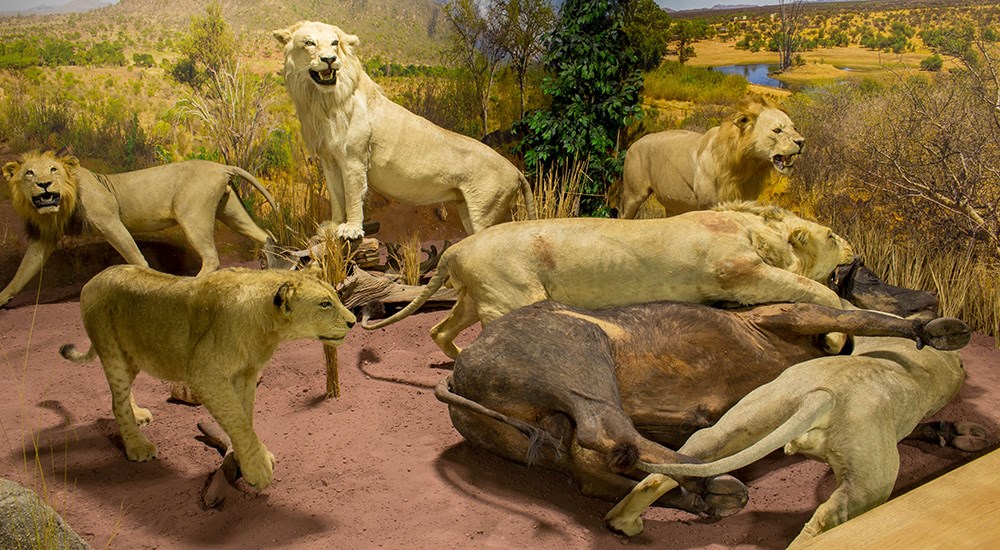 The museum’s African lion display is most impressive.
The museum’s African lion display is most impressive.
Bob and his team have done a great job amassing an interesting and impressive collection of animals and gear, tastefully displayed with the interest of education at heart. So if you find yourself in Upstate New York with a few hours to kill, stop by 3747 State Highway 30, Amsterdam, New York 12010, or give these good folks a call at (518) 883-4933; the Museum is open every day during the summer, but only on Saturdays for the other three seasons.
For more information, visit wildlifesportsmuseum.com.




































